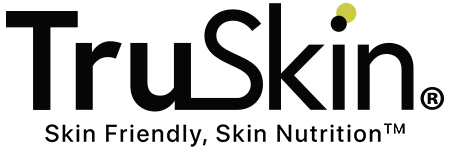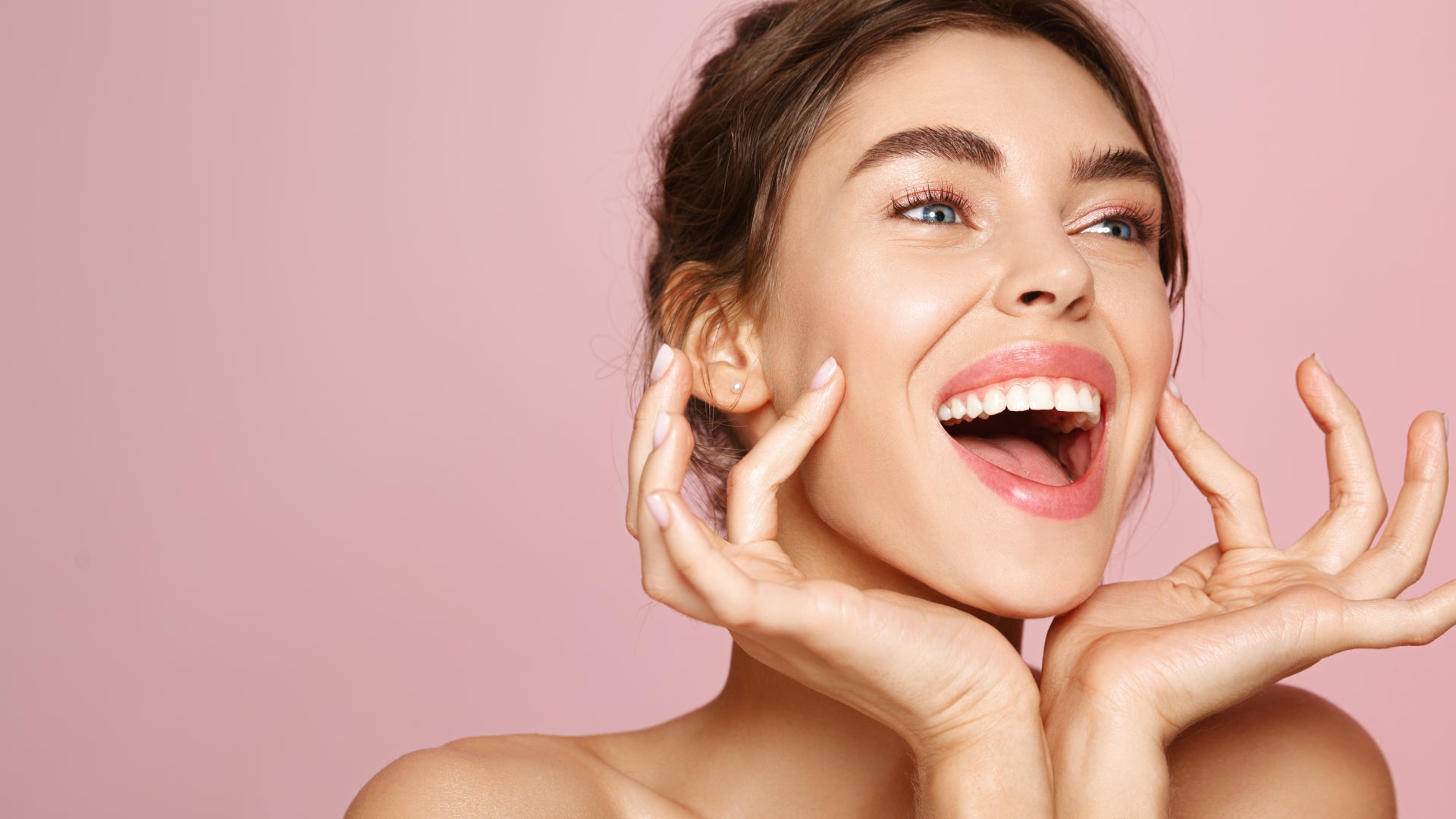
True Radical Honesty From Our Community
What To Do If You Hate Those Fine Lines Around Your Lips
Read MoreAdvice for all of your skin care needs
- all articles
- Acne
- Anti-Aging
- Collagen
- Combination Skin
- Company Announcements
- dry skin
- Exfoliation
- Eye Care
- Facial Redness
- Grooming
- Holidays
- Hyaluronic Acid
- Niacinamide
- Oily Skin
- Retinol
- Sensitive Skin
- Skincare
- Skincare Guide
- Skincare ingredients
- Skincare Routine
- Skincare Tips
- Sun Protection
- Toner
- Vegan Skincare
- Vitamin C
- view all
- Acne
- Anti-Aging
- Collagen
- Combination Skin
- Company Announcements
- dry skin
- Exfoliation
- Eye Care
- Facial Redness
- Grooming
- Holidays
- Hyaluronic Acid
- Niacinamide
- Oily Skin
- Retinol
- Sensitive Skin
- Skincare
- Skincare Guide
- Skincare ingredients
- Skincare Routine
- Skincare Tips
- Sun Protection
- Toner
- Vegan Skincare
- Vitamin C
-
Troubled with pimples on your chest? Annoyed by the dreaded 'bacne'? Then it’s time to take action against body breakouts once and for all.
Body breakouts… boy, are they stressful. Even during wintertime when your skin is mostly covered by chunky sweaters, they can be painful and itchy. And come summer when you want to start exposing a little more flesh to the world? Then the whole situation becomes downright rude.
So, what causes acne on your back and chest (aka folliculitis) and is it the same as the stuff that plagues your face? Kind of. All acne, wherever it may be located, is caused by excess oils which gets trapped in your pores alongside dead skin cells where, together, they become inflamed. Depending on the level of inflammation and whether the pore remains open or closed, these blocked pores can become anything from blackheads (although these are very uncommon on the body) and whiteheads through to pimples, pustules or full-blown cysts.
Body breakouts most commonly occur on your back and chest where your skin tends to be oilier. However, sweat coupled with friction from tight-fitting clothes can irritate the skin anywhere on your body, causing pimples on your legs, arms, even your butt – yes, butt acne: also a thing.
Whether you do or don’t get plagued by breakouts depends mainly on your genes and your skin’s level of oiliness, but hormones and stress are other major factors. You can also blame COVID-19 if you’ve noticed more flare-ups during this past year than ever before. The combination of worry, being too exhausted to take care of yourself and a poor diet can all increase inflammation and breakouts in your skin.
How To Treat Body Breakouts
Thankfully, most skin grievances come with simple solutions. And body breakouts are no exception. Below, we’ve rounded up five of the most effective – and easiest – ways to get prevent and treat body acne. You can thank us later.
1. Reassess Your Cleansing Habits
As tempting as it may be to start exfoliating your body like crazy in a vain attempt to scrub those zits away, this is a terrible idea. Harsh scrubs and cleansers will irritate your skin and compromise your barrier function, making matters a whole lot worse in the long term, so file them away for now. Oh and you know those overly fragranced shower creams that feel super moisturising and luxurious? Well, they’re going to do nothing for your body breakouts. Avoid.
Instead, wash your skin gently with an oil-absorbing, balancing cleanser like Skin Clearing Charcoal Face Wash. Charcoal Face Wash contains activated charcoal which helps draw bacteria, toxins, dirt and oils from your skin making it perfect for blemish-prone areas. Cleanse your body after shampooing and conditioning your hair so your conditioner doesn’t leave residue on your skin, and use a gentle mitt or muslin cloth to help exfoliate as you cleanse.
2. Shower Immediately After Working Out
Always remove your workout clothes and take a shower immediately after exercising.
Bacteria loves sweat, so if you like sitting around drinking tea or catching up with emails after working out, this will do your body breakouts no favors at all, increasing irritation and generally giving bacteria the perfect breeding ground to do its absolute worse. To avoid this, thoroughly cleanse your skin as soon as possible, using a gentle wash that contains acne-fighting ingredients like salicylic acid, tea tree oil or, of course, activated charcoal.
3. Moisturize
When you don’t moisturize your skin, your sebaceous glands go into overdrive, producing even more oils to counteract any dryness your skin may be experiencing. These oils will continue to block your pores and make breakouts ten times worse.
OK, so body oils and butters contain pore-clogging ingredients like coconut oil and cocoa butter which are terrible for acne-prone skin… but there are plenty of moisturizers that don’t and are perfect for balancing, soothing and repairing your skin’s barrier function. All of which are important for treating breakouts. Look for moisturizers that are non-comedogenic (this means they’re less likely to block pores) and contain light humectant and emollient ingredients which work to draw water into the skin and lock it all in. Ingredients like hyaluronic acid and glycerin are especially great for oily, congested skin types. You’ll find both of these in our Retinol Moisturizer which also contains retinol (obviously!) to help boost cell turnover and reduce irritation – win-win.
4. Spot Treat Troublesome Areas
As well as sticking to a smart cleansing and moisturizing routine, try spot treating problem areas with a targeted acne solution. And good news: most products you use on your face will also work on your body. The only ingredient we don’t advise using on body acne is benzoyl peroxide as this can bleach your clothes and bed linen. However, anything containing tea tree oil, glycolic acid, salicylic acid or lactic acid will do the job nicely.
Tea Tree Clear Skin Super Serum, for example, combines tea tree oil with salicylic acid, retinol and hyaluronic acid for a gentle, but super effective acne treatment. Apply a drop to clean fingers and smooth it over cleansed pimples daily to reduce irritation and promote healing.
5. Think About The Clothes You Wear
Clothes that generate friction or put pressure on your skin can irritate the follicles, causing another type of acne called acne mechanica. You know those pimples you might have had (or still have) due to wearing your facial mask for prolonged periods of time? Maskne as it became known as? Well, that was acne mechanica and just like facial masks can cause breakouts on your cheeks and jawline, tight clothing like snug collars can do the same to your body.
To reduce your chances of getting acne mechanica on your body, steer clear of tight clothing and man-made fibers which can add to sweat and bacteria build up. Choose cotton clothing as much as possible and wear looser clothes for a while to see if this helps with your breakouts.
And it goes without saying, wash your clothes, especially your bra, after every wear.
The Best Ways To Deal With Body Breakouts
read more -
Just like dry skin, oily skin comes with its problems. So, if a shiny t-zone, clogged pores and monthly breakouts are all too familiar bugbears, it’s time to take control.
If you’ve had oily skin for as long as you can remember you’ll understand the grievances of a greasy forehead, equally as slick bangs and makeup that just won’t stay put. And while having thicker, more resilient skin and fewer wrinkles (two of the plus sides of an oily complexion) might make you feel better for all of ten seconds, oily skin can seem like more of a curse than a blessing.
So, what causes oily skin and why might your skin be way slicker than your BFFs? Let’s investigate.
Important Fact: Your Skin Needs Oil
Your skin is your body’s largest organ and plays a very important role in regulating body temperature and protecting you from heat, light, injuries and infection. There are many factors that must come together for your skin to function properly, not least of which is its ability to produce a certain oil called sebum.
Sebum is a slightly sticky, oily substance that’s produced by sebaceous glands which are found in varying numbers all over your body – except on the palms of your hands and tops and soles of your feet. You know that infamous t-zone? Well, your forehead, nose, cheeks and chin have way more sebaceous glands than the rest of your face which is why it's notoriously shiny.
Sebum contains several types of complex oils and lipids such as triglycerides, fatty acids, wax ester, cholesterol and squalene which work together to lubricate and support the health of your skin. In fact, sebum is vital for sealing in moisture, creating a barrier from environmental stressors, helping your skin heal and transporting antioxidants to the skin’s surface. It also plays an important role in helping your skin maintain a slightly acidic pH level to prevent bacteria and viruses from penetrating the top layers.
Why Is Some Skin Oiler Than Others?
How much sebum your skin produces depends on many factors but it’s largely genetic. Does one or both of your parents have oily skin? Then chances are this is why your sebaceous glands are also larger and more active than you might like.
As you age, hormonal changes, medication and lifestyle factors such as stress, your diet and your skincare choices can also play a major role in your rate of sebum production (as does hot or humid weather), but for the most part you can definitely blame your parents if that makes you feel better.
The Downsides Of Oily Skin
As if the immediate annoyance of slick skin that requires a packet of daily blotting papers to control shine wasn’t enough to contend with, excess sebum can also create longer-term concerns. Namely, acne vulgaris – the medical term for common acne.
Oily skin and acne often go hand in hand because excess sebum prevents your dead skin cells from shedding from the surface of the skin, trapping bacteria and irritants with them. Your hair follicles then become blocked with this cocktail of sebum, dead skin cells and other nasties, which is when problems start to rear their ugly heads. If this plugged follicle remains closed, it will create a whitehead, whereas if it opens up at the surface of your skin it will become oxygenated, darken and turn into the dreaded blackhead. And if inflammation follows? Then we’re talking papules, pustules, nodules or cysts – known to most of you as zits.
How To Control Oily Skin – The Do’s & Don’ts
When it comes to sebum, the key is balance. This means that over-stimulating your skin with insane amounts of chemicals in your skincare or being a little too enthusiastic with your exfoliation routine is totally off the menu. Gentle skincare is the future.
Here’s a checklist of the most important do’s and don’ts for you to remember…
1. DO Resist The Urge To Over-Cleanse
We’ve said it before and we’ll say it again (sorry, not sorry), cleansing your skin like your life depended on it is seriously bad news. This is true whether your skin is dry, combination, normal or oily, but it’s especially important for oily skin types. How so? Because skin that’s ‘squeaky clean’ is skin that’s had all of its natural sebum stripped away. This may sound like the best news ever, but sebum is important for your skin’s health, so if you take it away with chemical-laced cleansers and/or harsh exfoliation your skin will produce even more sebum to compensate. The result? Skin that’s just as oily as it was before you cleansed. Maybe even more so.
By all means cleanse your skin morning, night and after exercising, but stick with gentle formulations like our Vitamin C Daily Facial Cleanser. You could also try Skin Clearing Charcoal Face Wash which contains activated charcoal to help draw out oils, dirt and bacteria – all without drying out your skin.2. DO Perfect Your Moisturizing Game
First things first, don’t think you can get away with not moisturizing because the same rules apply here as they do with over-cleansing: no moisture = more sebum.
When it comes to choosing a great moisturizer for oily skin, stick with gels, serums and light lotions above balms, creams and ointments. Also, keep away from heavy, occlusive ingredients like cocoa butter, beeswax and petrolatum as these create a barrier on your skin which you, of all people, should avoid.
If you suffer with clogged pores and/or acne, look for the terms non-comedogenic or non-acnegenic on your skincare labels. These mean that a product has been specifically formulated not to clog pores or cause acne respectively. It doesn’t mean they absolutely, 100 percent won’t, but they’re much less likely to. And that’s good enough for us.
3. DON’T Touch Your Face
You might think your hands are as clean as they’ve ever been, but they’ll still harbor dirt, oil and bacteria, no matter how often you wash and sanitize them. It’s just life. So, although it’s tempting, stop touching your face throughout the day as this will transfer all that extra oil and debris straight from your hands to your face. And if you’re guilty of wiping excess sebum off your cheeks and forehead with your fingers? Don’t do that. Invest in some blotting papers instead.
4. DO Apply A Retinol Treatment
We’re big fans of retinol as an anti-aging ingredient, but did you know retinol is also the nuts for tightening pores and balancing sebum? Regular use of a retinol treatment stimulates cell turnover, shrinks sebaceous glands and draws dead skin cells out of your pores, making them appear visibly smaller. Just remember to introduce retinol into your routine slowly and carefully to enable your skin to adjust without freaking out.
5. DON’T Overload Your Skin With Pore-Clogging Makeup
Heavy makeup might be tempting if you have blemishes you want to hide, but caking your skin in heavy, oil-based foundation will further clog pores and exacerbate flare-ups. And that’s a big nope from us.
If you can, leave your skin clean, bare and moisturized (at least on those days when you’re not leaving the house) or wear an oil-free tinted moisturizer with broad-spectrum sunscreen as a lighter alternative to full-on foundation. Mineral powder foundations are also a great shout for oily skin as they’re non-comedogenic and help mattify your skin without looking like you’ve tipped a vat of oil-controlling powder all over your face.
6. DO Get Some Salicylic Acid In Your Skincare Routine
Salicylic acid is a beta hydroxy acid (BHA) and quite possibly one of the most effective ingredients for treating oily and acne-prone skin. Like glycolic and lactic acids, salicylic acid exfoliates the skin. But unlike the others it’s lipophilic which means it penetrates oil to target blockages and thin sebum, allowing sebum to flow more freely to the skin’s surface. This helps deeply cleanse, balance and reduce inflammation while minimizing enlarged pores as part of the bargain.
As with retinol, salicylic acid can pack a potent punch, so always perform a patch test first, then go slowly when using it for the first time. Start applying it just once or twice a week, then as you continue to use it you can up the ante as your skin acclimates.
One of our top picks for oily skin is our Tea Tree Clear Skin Super Serum which combines the powers of salicylic acid with tea tree oil and retinol. And if that sounds like skin irritation just waiting to happen, fear not. It also contains calming niacinamide and hydrating hyaluronic acid. So... winner.
Got Oily Skin? Then You Need To Read This
read more -
Skincare that promises the world then delivers zip is annoying at the best of times, but for those with acne, it's downright soul destroying. The good news is there are a whole host of clinically-proven ingredients that offer real results for acne-prone skin. You just need to know what they are…
According to the American Academy of Dermatology (AAD), acne is the most common skin condition in the US, affecting around 50 million Americans every year. And it’s not just teenagers who are plagued by breakouts. In fact, research shows that approximately 12 to 22 percent of adult women in the US suffer from acne in some form. Whether you're prone to blackheads, whiteheads, pimples or deep painful cysts, the fact is, acne sucks.
But what really causes acne? Well, it’s pretty simple actually: blocked pores. More to the point, acne is caused when an excess of sebum (oil) works with bacteria and dead skin cells to clog up your pores. If this pore remains closed, it’ll become a whitehead, whereas if it opens up, oil and dead skin cells oxidize and turn brown or black, making it a blackhead. Pimples and pustules, meanwhile, form slightly deeper under the surface of the skin which is why they become red and inflamed. All good fun – not.
Now we hate to be the bearer of bad news, but the main trigger of excess sebum production is kind of out of your control, and that’s family history – you can’t change your genetics, after all. Oil glands also become over-stimulated by stress and an imbalance of hormones, which is why puberty, pregnancy, menstruation and the menopause can all lead to flare-ups. Think you can find a miracle cure for acne? Yes, reducing your levels of stress will help and yes, a healthy diet is a great idea. But a miracle cure? Sorry, it’s simply not going to happen.
Treating and controlling your breakouts, however? Now that, you can do. Here’s how.
5 Of The Best Skincare Ingredients For Acne-Prone Skin
At-home skincare can be very effective for managing blackheads, whiteheads, pimples and pustules if you know what to embrace – and also what to avoid. Your first step is to look for products that are non-comedogenic which means they’re less likely to block your pores. You should also avoid rich, occlusive oils such as coconut, olive and avocado. Lighter oils like jojoba and grapeseed are less likely to cause problems and in fact some oils such as ylang ylang and lavender even have anti-inflammatory benefits, so don’t dismiss oils altogether. Just make smart choices and avoid the super-heavy ones.
Next up, look for these scientifically-proven ingredients in your skincare and remember, when trying any new treatment, always do a patch test first and give them a reasonable amount of time (at least four, but preferably eight weeks) to work.
1. Salicylic Acid
A highly researched beta hydroxy acid (BHA), salicylic acid is one of the most effective ingredients for acne-prone skin. Salicylic acid is an oil-soluble acid that works by breaking the bonds between skin cells to encourage the dead ones to fall off. Unlike alpha hydroxy acids (AHAs) like lactic and glycolic, salicylic acid also targets oil blockages where it thins sebum, allowing it to flow more freely to the skin’s surface. This helps decrease excess oil, reduce inflammation and minimize enlarged pores which are three important skincare needs for anyone suffering with unwanted breakouts.
Tip: For the best, visible results, look for leave-on salicylic acid treatments that are formulated with a concentration of at least 2 percent – BTW, our Tea Tree Clear Skin Super Serum checks both of those boxes.
2. Benzoyl Peroxide
Benzoyl peroxide is a chemical compound that’s been used very successfully as an acne treatment for over 90 years. Similar to salicylic acid, benzoyl peroxide has anti-inflammatory properties and its main job is to accelerate cell turnover while removing sebum and dead skin cells from your pores to help reduce blockages. It also has one other trick up its sleeve, however, and it’s a very important one: it totally destroys bacteria by releasing oxygen onto the skin. This makes it particularly effective for inflammatory acne such as pimples and pustules.
Tip: Benzoyl peroxide can bleach bed linen and clothing, so make sure you allow any leave-on treatment to fully dry before getting dressed or going to bed.
3. Retinol
While it’s most often thought of as an anti-aging ingredient, retinol should never be overlooked in the treatment of acne. And here’s why. Retinol is an over-the-counter derivative of vitamin A that, again, increases cell turnover, but in a very different way to salicylic acid and benzoyl peroxide. The difference is that retinol attaches itself to nuclear receptors in the center of your cells which is where genetic information is stored and where major cellular functions are processed. Once attached to these receptors, retinol activates certain genes to accelerate cell turnover and therefore remove dead skin cells and keep the pores clear from debris. Smart cookie.
Tip: Retinol is a super-active ingredient, so start your usage slowly by applying it every two or three evenings to clean, dry skin. As you build tolerance, you can build up to a nightly routine.
4. Tea Tree Oil
Looking for an all-round antibacterial, antifungal, anti-inflammatory and antimicrobial ingredient whose entire MO is to target your acne problems? Then tea tree oil could be exactly what you’re looking for. This essential oil has been used in traditional medicine practices for centuries and has been scientifically proven to treat and heal mild-to-moderate acne. In fact, one clinical study showed tea tree oil to be 3.5 times more effective at reducing acne lesions than a placebo after six weeks of use. Now, that’s the kind of stat we love. Tea tree oil is also less drying and irritating than salicylic acid, benzoyl peroxide and retinol which makes it a great option for sensitive skin types.
Tip: Although rare, tea tree oil has been known to cause allergic contact dermatitis, so stick with diluted formulations like our Tea Tree Clear Skin Super Serum and always carry out a patch test first.
5. Activated Charcoal
Activated charcoal works by binding itself to nasty substances on the skin and whisking them clean away. Kind of how a sponge soaks up spillages. This is why charcoal is often used in medicine to remove dangerous ingested toxins such as poison. And why it’s such a great skincare ingredient for drawing bacteria, toxins, dirt and oils out from the skin – which as you know are the main causes of acne.
Activated charcoal is produced by burning a plant or animal product and then treating it to remove certain substances and increase its surface area. Don’t worry, however, we use activated coconut charcoal in our Skin Clearing Charcoal Face Wash. No animals were harmed in the process.
Tip: Activated charcoal is black (obvs), so be careful when using it near light clothing and face cloths as it may cause staining.
A Final Word On Professional Acne Treatments
If you want to hit acne from both sides, think about getting some regular professional treatments at the derm’s office. There are many awesome options for treating acne-prone skin that perfectly complement an effective at-home routine – think chemical peels, HydraFacials, light therapy, even steroid injections.
What works for some might not work for you, however, so always get a consultation first from a qualified expert.
Acne Fixes That Are Borderline Genius
read more













